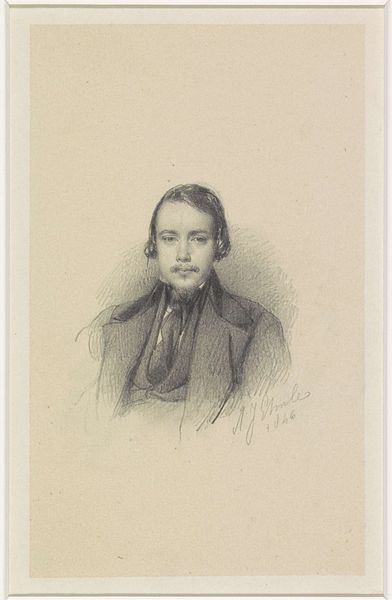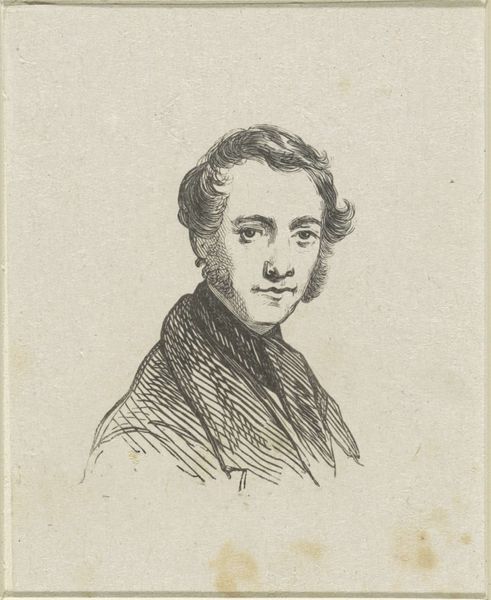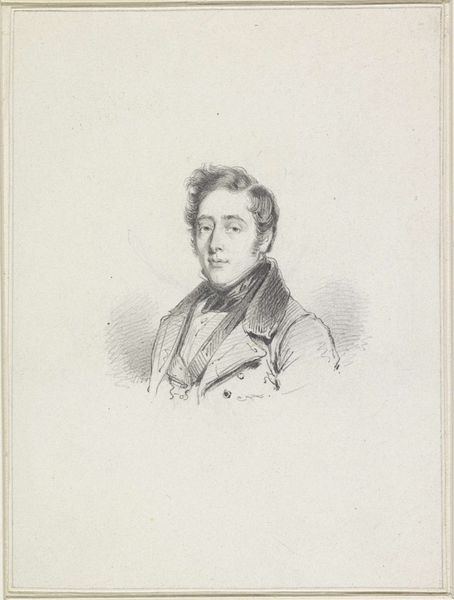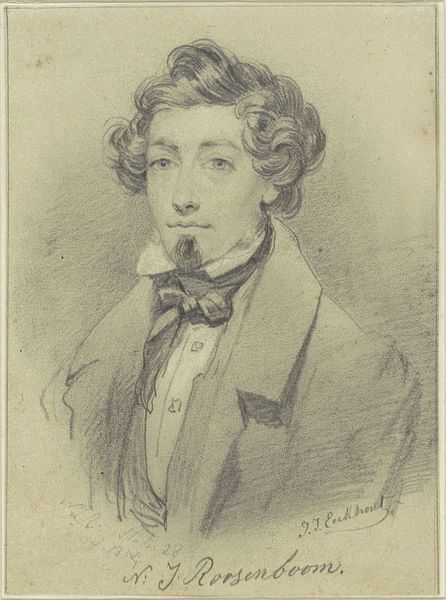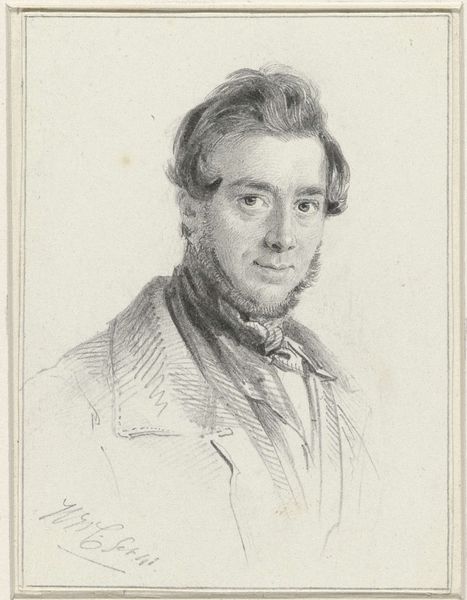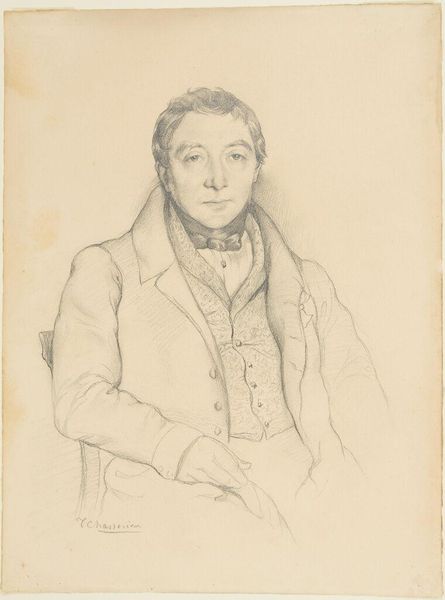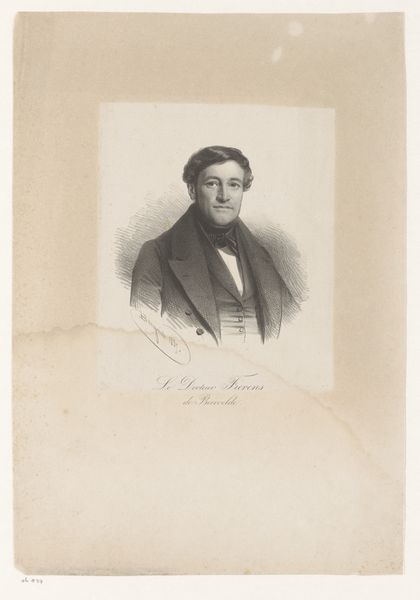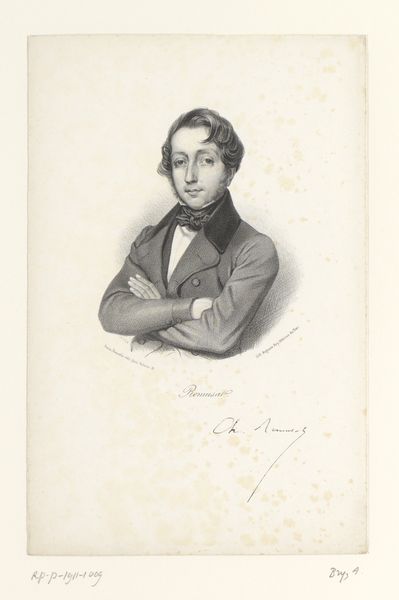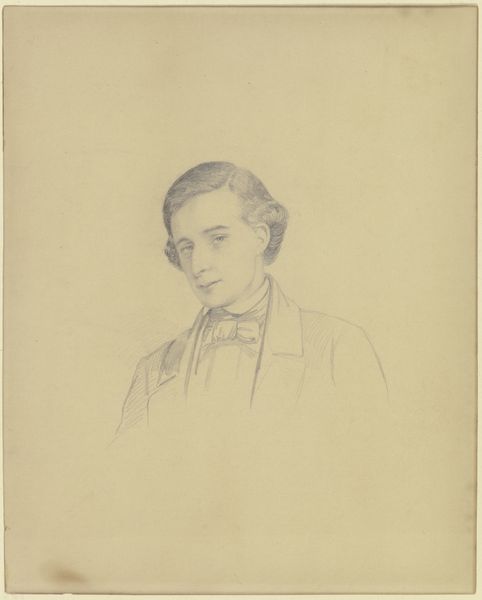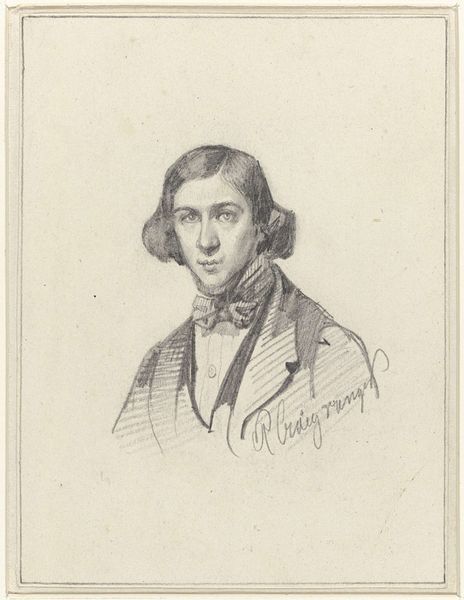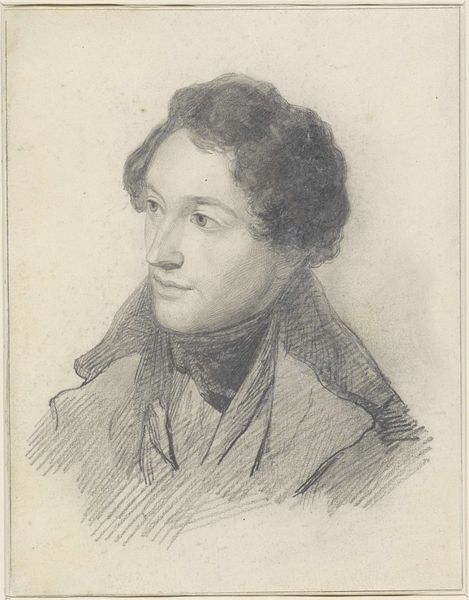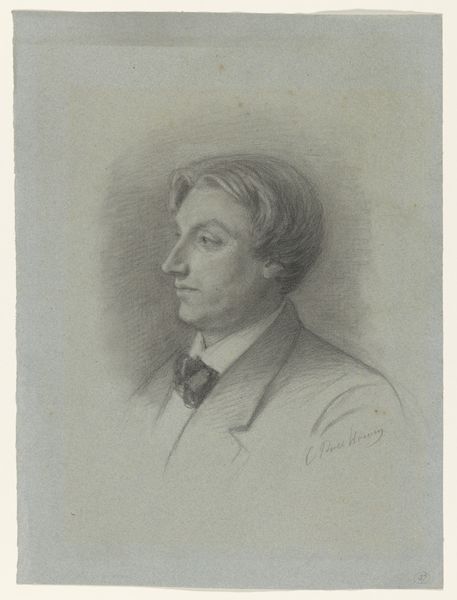
drawing, pencil
#
portrait
#
drawing
#
pencil drawing
#
pencil
#
realism
Dimensions: height 153 mm, width 97 mm
Copyright: Rijks Museum: Open Domain
Editor: So, here we have Adrianus Johannes Ehnle's 1846 portrait of Johannes Franciscus Hoppenbrouwers, a drawing rendered in pencil. It's striking how immediate it feels, almost like a snapshot. What stands out to you when you look at this work? Curator: I'm immediately drawn to the materiality of this piece, to the simple fact that it’s a drawing, made with a pencil. In 1846, the availability and accessibility of pencils allowed for a certain democratization of portraiture. It moved away from the exclusive domain of oil painting, shifting its status to include more middle class individuals, would you agree? Editor: Absolutely. It suggests a different kind of patronage, right? Not necessarily the wealthy elite, but maybe the rising middle class who are buying and commissioning art? Curator: Exactly. Consider also the labor involved. A pencil portrait, while requiring skill, is faster to produce than an oil painting, suggesting a change in the economics of art production and consumption. What's implied when using pencil? Why this medium rather than a painting or etching? Was it because of accessibility? Perhaps to create multiples? Editor: That's really interesting. I hadn't considered the connection between the material itself – the pencil – and the broader social context. So it's not just *what* is depicted but *how* it's made, and *why*? Curator: Precisely. By examining the materials and methods of production, we can unlock deeper understandings of the work's place within its historical moment, beyond the surface-level likeness. The pencil wasn't just a tool; it was part of a shifting landscape of art production and consumption, embodying notions of access, speed, and, in some ways, a move toward "mass" culture. Editor: So much to think about! Thanks, I’m seeing this portrait with completely new eyes. Curator: And I believe we’ve unearthed a valuable lesson: every stroke tells a story about material conditions and broader social shifts.
Comments
No comments
Be the first to comment and join the conversation on the ultimate creative platform.
